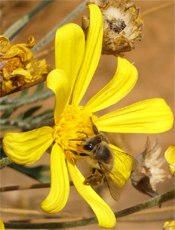BeeHives.co.za
It's all about bees
Latest News
1/31/2018
We are holding our bee course on the 10 FEB | 3 Mar. Any beginner beekeepers are welcome! Register now for our full day bee course with 60min open hive inspection experience!
1/31/2018
If you're looking for professionally made bee hives you can find them at Beehives dot coza .
Call: +27 12 771 4288 | 083 308 0042
Email: info@beehives.co.za
Queen Excluders for Langstroth Beehives !

We supply accessories to bee hives to the public and for projects.
You can expect to have aluminium queen excluders with metal frames available most times of the year.
The queen excluder keeps the queen bee from laying eggs in the Langstroth super chamber or shallow box, where the honey is stored.
Without the queen excluder, the honeycomb would be mixed with brood, eggs and larvae and very difficult to harvest and filter.
Bee Hive Profiles
If you're having trouble decising which bee hive to buy, check out the bee hive profile on the Langstroth hive.
This is a bee hive designed by South African beekeeping family that gives the bee hive it's namesake, the Jackson Bee hive